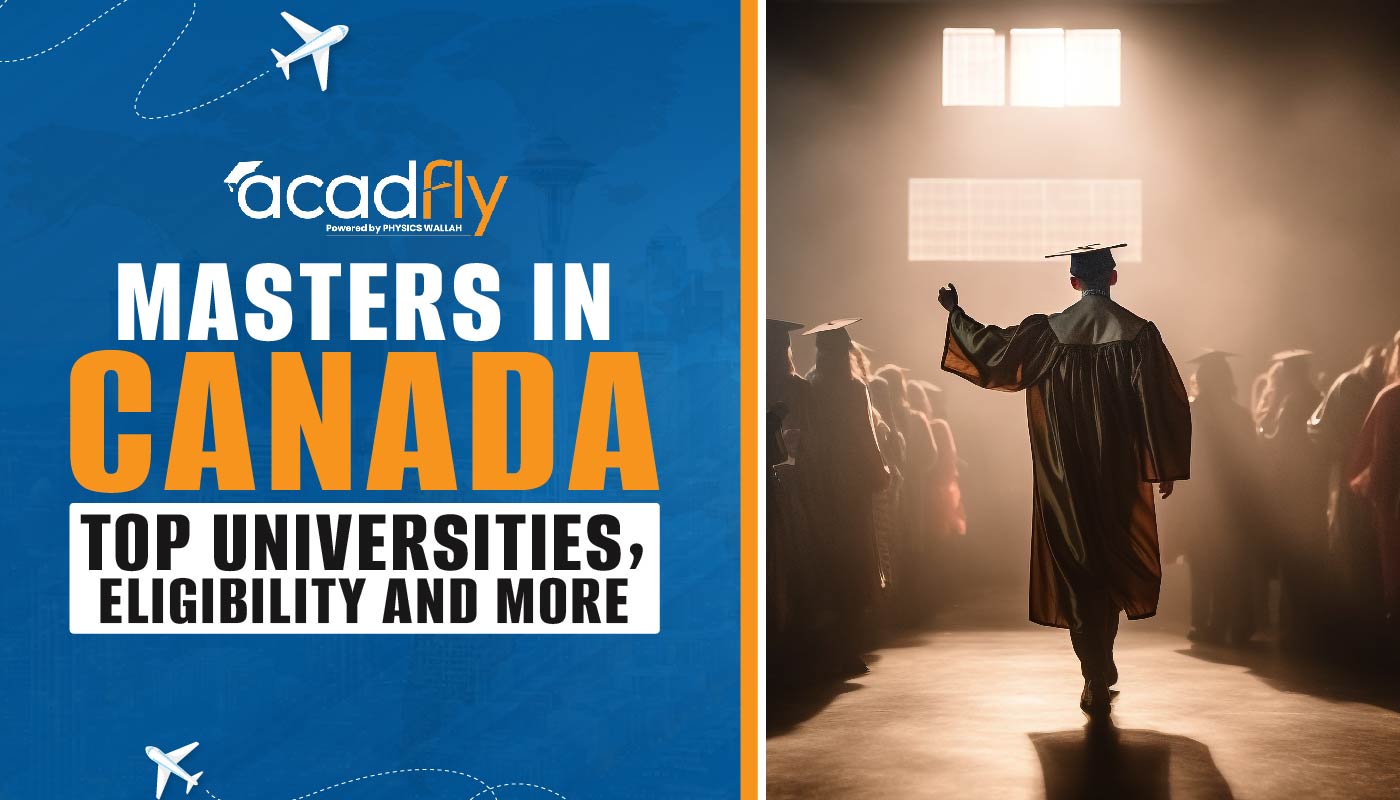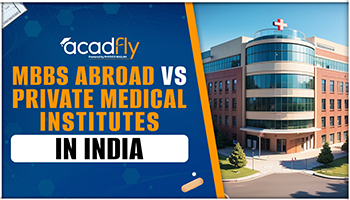Life and Experience of an MBBS Student Abroad: Studying MBBS abroad is not just about attending lectures and earning a degree. It's a life-changing experience that changes candidates academically, personally, and professionally. Each year, thousands of Indian students take the step of pursuing their medical education abroad, motivated by factors like quality education, global exposure, and affordable fees.
But what does the life of an MBBS student abroad truly look like? The below section provides an inside look into the daily routines, academic expectations, cultural transitions, and others of students pursuing MBBS outside India.
Why Choose MBBS Abroad?
Every year, lakhs of students appear for the NEET exam to get into medical colleges in India. But due to limited seats and high competition, only a few candidates get admission. This is why studying MBBS abroad has become a popular choice because it offers quality education at a lower cost. Countries like Russia, Georgia, the Philippines, and Kazakhstan have good medical universities that are approved by the NMC and offer courses in English. These universities also provide good hostel facilities, Indian food, and a safe environment for students. Below are some points why students choose MBBS abroad:
-
Low Competition for Admission
-
Affordable Tuition Fees
-
Globally Recognized Degrees
-
English-Medium Courses
-
Modern Infrastructure and Teaching Methods
-
High-Quality Clinical Training
-
No Donation or Capitation Fees
-
Global Exposure
Daily Academic Life of an MBBS Student Abroad
Studying MBBS abroad is not just about lectures and books. It is a combination of classroom learning, hospital visits, and practical training. The daily routine of an MBBS student abroad is designed to provide a strong knowledge base and clinical skills. Below are what is the daily academic life of an MBBS student abroad look like:
1. Morning Classes
Students usually start their day early with lectures on subjects like Anatomy, Physiology, or Biochemistry. Classes are conducted in English in most universities.
2. Laboratory Sessions
After theory, students move to lab sessions where they perform practicals, such as dissections, microscope studies, and body part identifications.
3. Clinical Training
From the second or third year, students begin clinical rotations. They visit hospitals, observe doctors, and interact with patients under supervision.
4. Self-Study Time
Evenings are often spent studying, revising classwork, or preparing for upcoming tests. Many students form study groups for better understanding.
5. Assignments and Projects
Students regularly receive assignments and case studies that help them understand real-life medical conditions.
6. Language and Communication Classes
In some countries like Russia or China, students take language classes to communicate better with patients during hospital visits.
7. Doubt-Clearing Sessions
Many universities offer extra tutorial classes or doubt-clearing sessions to support students who need help with certain topics.
8. Library and Research Time
Students often spend time in the university library to read reference books or prepare for exams like FMGE or NEXT.
9. Health and Wellness Activities
Some universities encourage yoga, sports, or fitness sessions to help students maintain a healthy balance between study and well-being.
Cultural and Social Experiences of MBBS Students Abroad:
Studying MBBS abroad is not just about academics. It is also about adjusting to a new lifestyle and culture. Students get to meet people from different countries, try new food, and experience life in a completely different environment. These experiences help students grow, become more confident, and learn how to live independently. Below points contain some common cultural and social experiences of MBBS students abroad:
1. Adapting to a New Culture
At first, it may feel strange to live in a new country. But over time, students get used to the local customs, food, and way of life.
2. Making New Friends
Students meet classmates from India and other countries. These friendships become a strong support system during their time abroad.
3. Celebrating Indian Festivals
Many Indian students celebrate festivals like Diwali, Holi, and Eid together. Cultural associations often organize events, making students feel at home.
4. Trying New Food
Food habits can be different, but students enjoy trying new dishes. Many also learn to cook Indian food in shared kitchens.
5. Language Learning
In non-English-speaking countries, students often learn basic local language to help them during hospital rounds or while shopping.
6. Travel and Exploration
Students explore local cities, tourist spots, and nearby countries during holidays. It adds fun and adventure to their journey.
7. Participating in Campus Events
Universities hold cultural shows, talent hunts, sports events, and international student meets where students can show their talents and make memories.
8. Handling Homesickness
In the beginning, students may miss home, but regular video calls, making friends, and staying busy help them adjust emotionally.
Cost of Living and Budget Management
Living abroad as a student means managing your own money wisely. Apart from tuition fees, students have to spend on accommodation, food, transport, internet, and other daily needs. Learning how to manage a monthly budget helps students live comfortably without overspending. With proper planning, MBBS abroad can be affordable and stress-free. The table below breaks down the approximate tuition fees of different countries abroad:
|
Country |
Annual Tuition Fee (INR) |
Total Cost (5-6 Years) |
|---|---|---|
|
Russia |
INR 2.5 – INR 5 lakhs |
INR 20 – INR 30 lakh |
|
Georgia |
INR 3.5 – INR 6 lakhs |
INR 25 – INR 40 lakh |
|
Philippines |
INR 3 – INR 6 lakhs |
INR 20 – INR 35 lakh |
|
Kazakhstan |
INR 2 – INR 4 lakhs |
INR 15 – INR 25 lakh |
|
Ukraine |
INR 2.5 – INR 4.5 lakhs |
INR 20 – INR 30 lakhs |
Additional Expenses
-
Hostel/Accommodation: INR 10,000 – INR 25,000/month
-
Food & Transport: INR 5,000 – INR 10,000/month
-
Miscellaneous (books, SIM card, visa, etc.): INR 1 lakh - 2 lakh annually
Food, Festivals & Homesickness
Living away from home means missing familiar food, celebrations, and family. For many Indian students, adjusting to a new country includes dealing with changes in meals and missing home during festivals. But when time passes, students find various ways to feel more comfortable and stay connected with their roots. Below are some common experiences:
1. Missing Indian Food
In the beginning, students miss homemade food. But many universities have an Indian mess or nearby restaurants that serve Indian dishes, which overcome this problem.
2. Learning to Cook
Many students learn to cook simple Indian meals. This not only saves money but also gives a taste of home.
3. Celebrating Indian Festivals
Indian students abroad often come together to celebrate festivals like Diwali, Holi, and Navratri. These events help them feel at home.
4. Staying in Touch with Family
Students make video calls, send messages, and share pictures regularly to stay close to their families.
5. Coping with Homesickness
It’s normal to feel lonely at first. Making new friends, joining cultural events, and staying busy help students overcome homesickness.
6. Trying Local Food
While Indian food is available, many students also enjoy trying new local dishes and learning about different cultures.
Choosing the Right Medical Colleges Abroad for Indian Students
Choosing the Right Medical Colleges Abroad for Indian Students is a very important step in the MBBS journey. The quality of education, recognition of the degree, safety, cost, and student support all depend on the candidate's choice of university. Indian students should look for NMC-approved colleges that offer English-medium courses, good clinical training, and strong student support systems.
Factors to Consider while Choosing Medical Colleges Abroad for Indian Students:
-
NMC Recognition
-
WHO & ECFMG listing
-
Medium of Instruction (English preferred)
-
Duration of Course (5 or 6 years)
-
FMGE passing rate of alumni
-
Safety and the Indian student population
-
Cost and scholarship opportunities
Top Recommended MBBS Countries for Indian Students:
-
Russia: Affordable, old universities, Indian communities
-
Philippines: US-based curriculum, English speaking
-
Georgia: Modern infrastructure, friendly environment
-
Kazakhstan & Kyrgyzstan: Budget-friendly
-
Uzbekistan: A Growing Destination with NMC-approved colleges
Life and Experience of an MBBS Student Abroad combines future opportunities, cultural enrichment, personal development, and academic excellence. It has its share of difficulties, such as homesickness and language barriers, but the benefits greatly exceed the drawbacks.
Studying MBBS abroad provides an opportunity for a successful medical career to thousands of young Indians. In addition to teaching medicine, the MBBS abroad program for Indian students provides freedom, flexibility, and a global perspective.
With the right planning, university selection, and determination, students can make the most of their journey. The MBBS abroad in India is rising, especially when it's completed with strong clinical knowledge, FMGE success, and soft skills.
Life and Experience of an MBBS Student Abroad FAQs
Is studying MBBS abroad safe for Indian students?
How is the daily routine of an MBBS student abroad?
Do Indian students face language problems while studying MBBS abroad?
How do students manage homesickness while studying abroad?
Which country is best for MBBS for Indian students?









